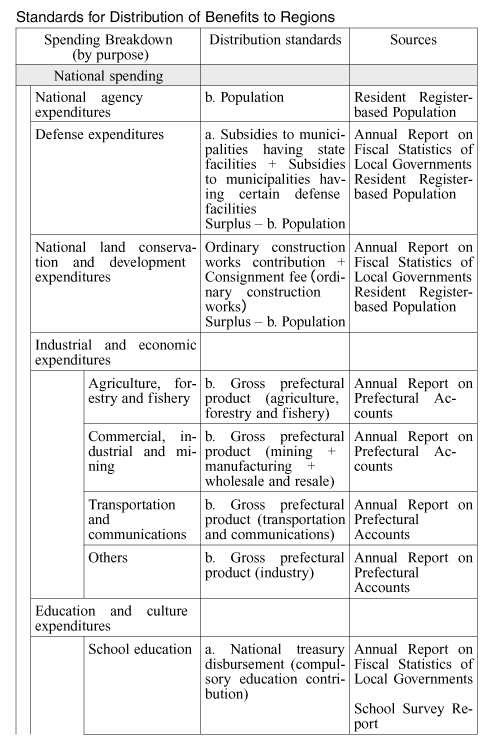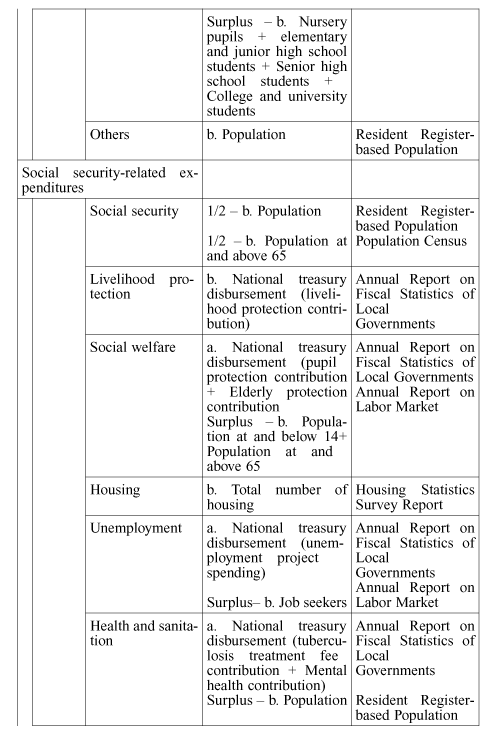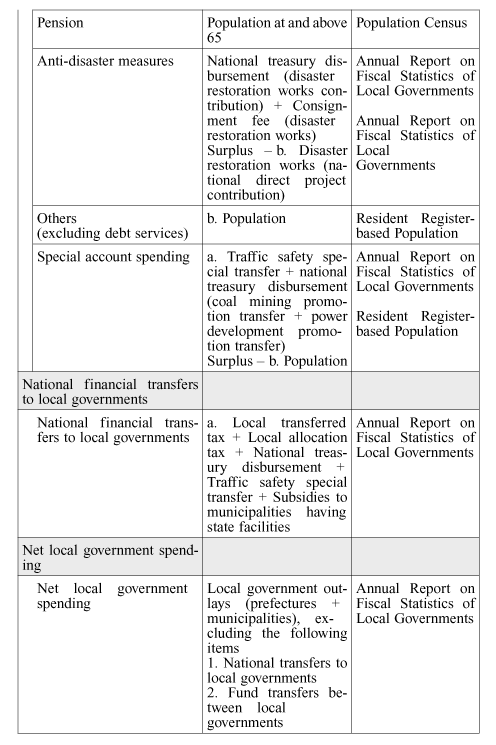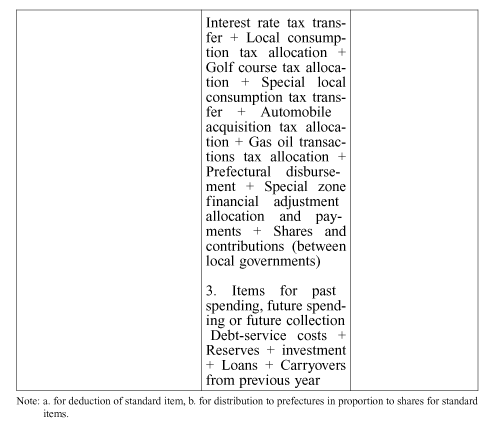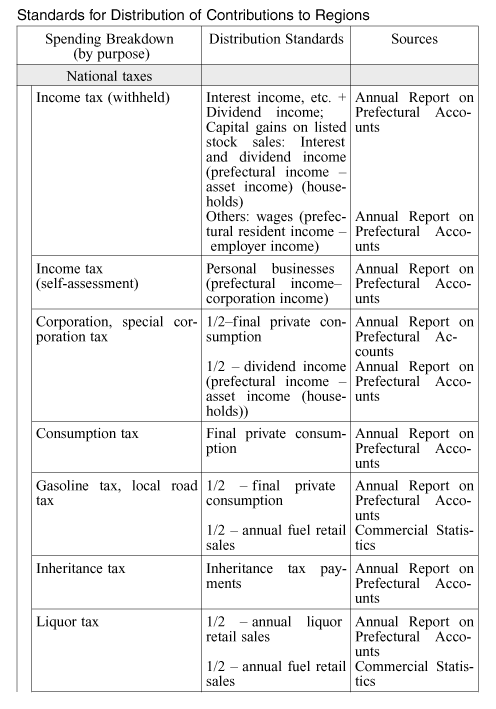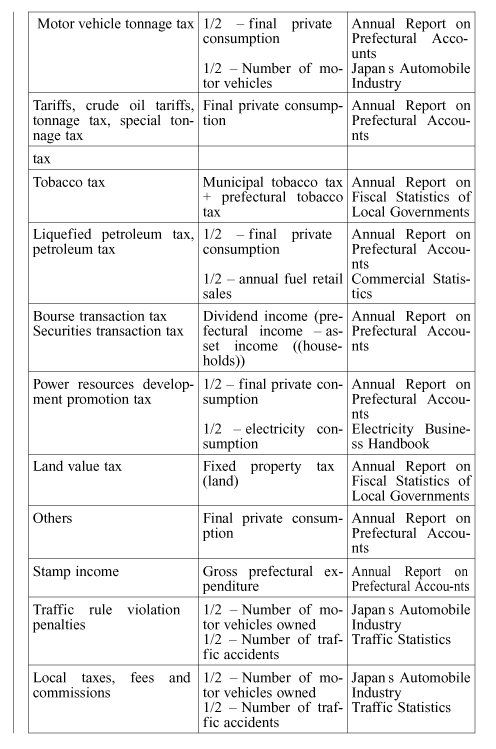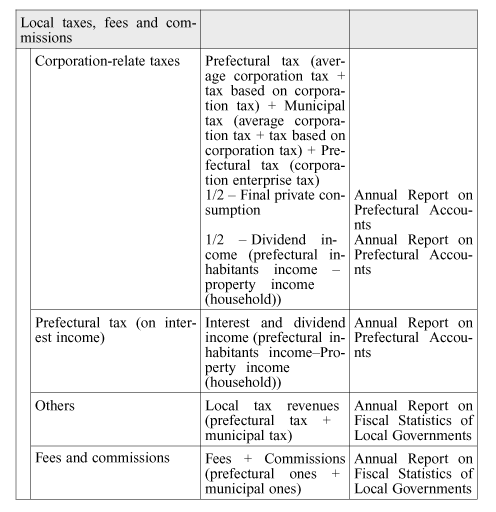Appended Note 3-2 Measurement of Local Residents' Benefits and Contributions
- Japanese version
- English version
1. Method for Calculation of Benefits
It may be difficult to quantify local residents' benefits from administrative services. We here regard such benefits as local spending by the national and local governments.
In measuring the benefits, we divided them into three categories--(a) direct spending by the national government, (b) financial transfers from the national government to local governments, and (c) net spending by local governments--for separate estimation.
Methods for calculation of the three categories follow:
(Direct spending by national government)
No regional breakdown of direct spending by the national government (a) is available. We set certain standards for distribution of purpose-by-purpose outlays in the whole of the general account to regions on a settlement basis. Spending through special accounts is considered to be coming from the general account, since financial transfers are made from the general account to special accounts. As for special accounts that bypass the general account and receive tax revenues directly (crude oil and other import tariffs, power resources development promotion tax, gasoline tax), we booked spending corresponding to tax revenues.
Defense, national agency and other outlays that are not suitable for distribution to regions (hereinafter referred to as national spending A) are separated from those that have specific regional purposes and are suitable for distribution to regions (hereinafter referred to as national spending B). Debt-service outlays are excluded here since they are different from outlays bringing about direct benefits in the relevant fiscal year and considered to be representing past spending for benefits in earlier years.
National spending A is considered to be benefiting any person in any region in Japan and distributed in accordance with regional shares of total population. As for national spending B, purpose-by-purpose national outlays are distributed to regions in accordance with the most relevant indicators. Direct national spending for each region is calculated by subtracting national transfers to each region (b), as described later, from total national spending (national spending A + national spending B) for each region as calculated in the above way.
(National financial transfers to regions)
National financial transfers to regions (b) are actual transfers booked as revenues of local governments, covering local transferred tax, local allocation tax, national treasury disbursement, special allocations for traffic safety measures and subsidies to municipalities having national facilities.
These actual transfers are booked for calculation here. The specifics of these actual transfers are available through local financial statistics.
(Net local spending)
Net local spending (c) is the total of prefectural and municipal outlays on a settlement basis, excluding national financial transfers to local governments (b), prefectural disbursement and other transfers between local governments, debt-service outlays and carryovers from the previous year for past spending, reserves for future spending, and loans for future recovery.
2. Method for calculation of contributions
Contributions that local residents make to get administrative services are basically limited to taxes, fees and commissions.
Contributions are divided into two--(a) national taxes and (b) local taxes, fees and commissions--for separate estimation. Their respective calculation methods follow:
(National taxes)
National tax (a) revenues on a settlement basis are distributed to regions in accordance with certain standards set for each of corporation, consumption and other national taxes. Some may try to base the region-by-region distribution of national tax revenues collected at prefectural taxation offices.
But these revenues do not necessarily reflect actual contributions by local residents. For example, business corporations pay the consumption tax to taxation offices that cover the locations of these corporations' head or principal offices, while real consumption tax contributors are consumers resident throughout Japan.
Therefore, we have set certain standards based on relevant data to distribute a national total of each tax to regions. Fines paid by traffic rule violators (to a special account), though not a national tax, are included into national taxes as an item to counter special allocations for traffic safety measures that are booked as benefits. Debt-service outlays cover future contributions and are excluded here.
We divide national taxes into two groups--household contributions (national tax A) and business corporations' temporary contributions (national tax B). National tax A is distributed in accordance with region-by-region shares of tax sources. National tax B is considered to be factored into product prices and passed on to consumers, and is distributed in accordance with region-by-region shares of private consumption spending. As for the corporation tax, shareholders are considered to contribute half and consumers the other half.
(Local taxes, fees and commissions)
Since local taxes are usually paid by local residents, prefecture-by-prefecture local tax revenues (prefectural and municipal taxes) on a settlement basis are treated as "contributions." A certain region' s corporation inhabitants and enterprise taxes, like the corporation tax (national tax), are imposed on corporations that have head offices in the region. Therefore, these local corporation taxes are distributed in the same way as national taxes. For a similar reason, the inhabitants tax on interest income is distributed in the same way as the national withheld interest tax. Fees and commissions that local residents actually contribute are included into contributions.
3. Regions subject to estimation
In consideration of the data constraints and the accuracy of the analyses, we subject "prefectures" to estimation of benefits and contributions.
4. Periods subject to estimation
Five years--FY 1980, 1985, 1990, 1995 and 1998.
(Exceptions)
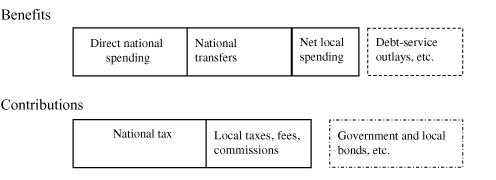
(Sources)
Nobuhisa Sano (2000) Regional Financial Dependence Structure, Development Bank of Japan Regional Policy Research Center Regional Policy Research 2000-No.3 Yoshitsugu Hayashi (1997) Tax and Financial System for New Era for Regional Communities
